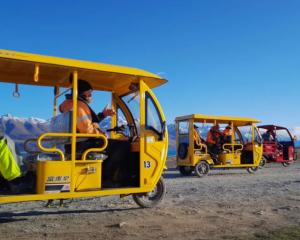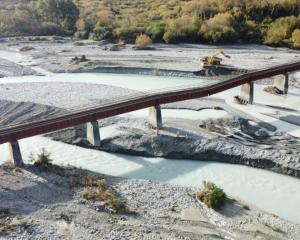
The National Institute of Water and Atmospheric Research (Niwa) 2021 annual climate summary, released yesterday, confirmed the nationwide average temperature for 2021 (13.56 deg C) had surpassed New Zealand’s previous hottest year in 2016.
The year’s highest temperature (39.4 deg C) was reached in Ashburton on January 26.
And despite an overnight low of -8.8 deg C on May 27 at Dunedin Airport, the city’s Musselburgh station also recorded the highest annual average temperature (12.3 deg C) last year since records began there in 1947.
In March, parts of the South Island also became very dry as Blenheim, Kaikoura, Culverden, Cheviot, parts of Christchurch, Akaroa, Oamaru, Windsor, Cromwell, Clyde, Lauder, Alexandra, Wanaka and Middlemarch all recorded more than 25 "dry days" during the month, the report said.
Niwa forecaster and report co-author Nava Fedaeff said Dunedin’s record cold record was definitely the exception and not the rule.
"That was just one day," Miss Fedaeff said.
"Everything else was drier, wetter, or warmer — but not colder.
"We’ve moved the ‘baseline’.
"With a warmer climate it’s very rare for us to have those cold temperatures.
"It doesn’t mean it’s not going to happen, it’s just less common."
Seven of the past nine years were among New Zealand’s warmest, Miss Fedaeff said.
As climate change continued to influence the weather, cold-weather extremes were expected to decrease, she said.
Rather than cold extremes, her report detailed a year of high temperatures, long dry spells, devastating floods and damaging winds.
From January 25 to 28, hot air from Australia combined with westerly winds and caused widespread record or near-record temperatures across eastern New Zealand..
By the end of April, the lack of rain and low hydro lake levels caused the Tiwai Point aluminium smelter to lower its consumption of electricity.
But parts of the South Island were also inundated with rain last year.
At the end of May, prolonged and heavy rain overwhelmed Canterbury and a state of emergency was declared across the region.
Damage was widespread and hundreds of residents were evacuated, including the entire town of Springfield, Miss Fedaeff’s report said.
At the start of the year, on January 2, up to 200 holidaymakers were evacuated when the Otematata River burst its banks.
Another 200 people at the Whare Flat Folk Festival, near Dunedin, were stranded due to rising water levels in Silverstream.
Due to flooding in Middlemarch, residents were advised not to flush their toilets, and to avoid drinking water from bores as it was likely to be contaminated.
In the 48-hour period from 9am on January 1, Alexandra received 120mm of rain, or a third of its normal annual rainfall.
Wind also wreaked havoc last year.
Strong northwesterly winds flipped a caravan being towed by a ute in Tekapo-Twizel Rd (State Highway 8) on April 4 and it fanned wildfires, including fires near Fairlie, Temuka, Owaka, Waikouaiti, and three fires in Southland.
The wind downed trees and power lines in Temuka, causing a few hundred power outages, the report said.
In two major dumps in June and August, parts of Southland and Otago were buried under heavy snow, closing schools and disrupting travel, it said.













